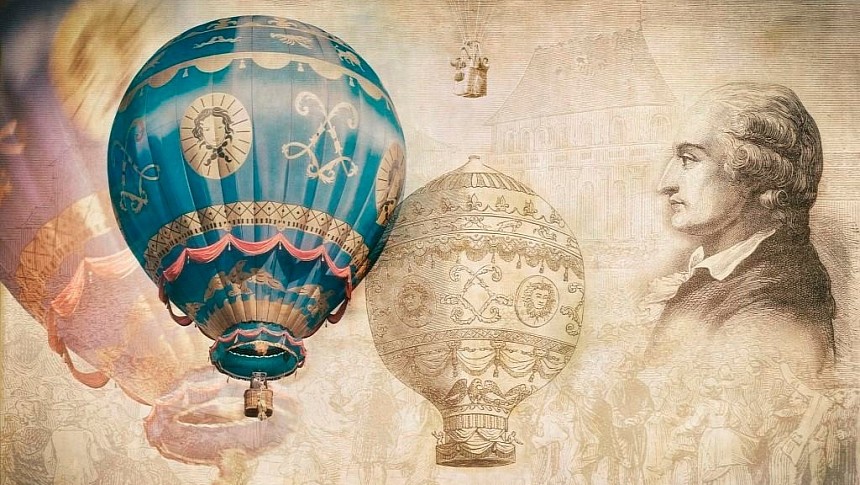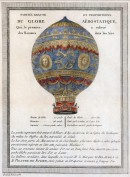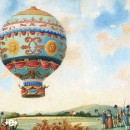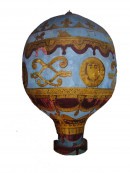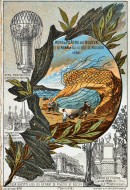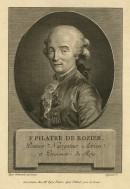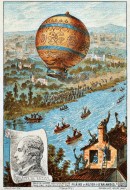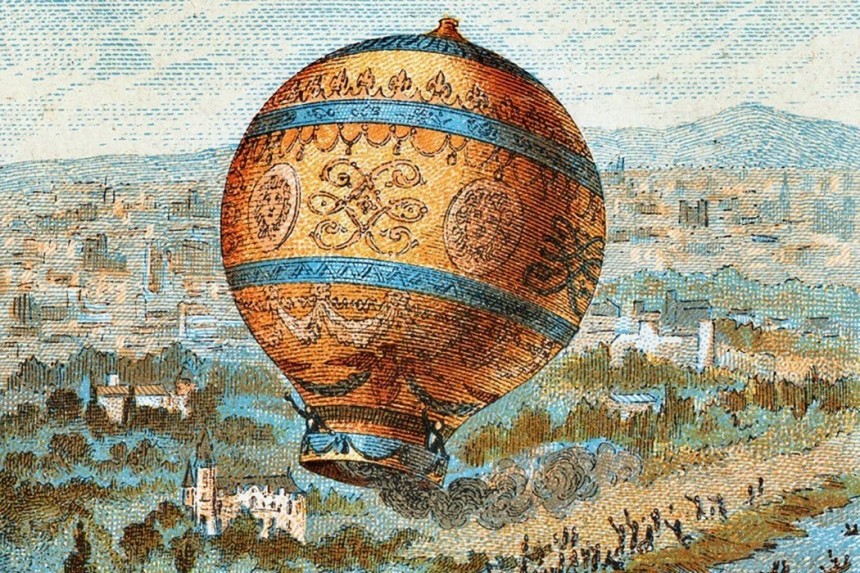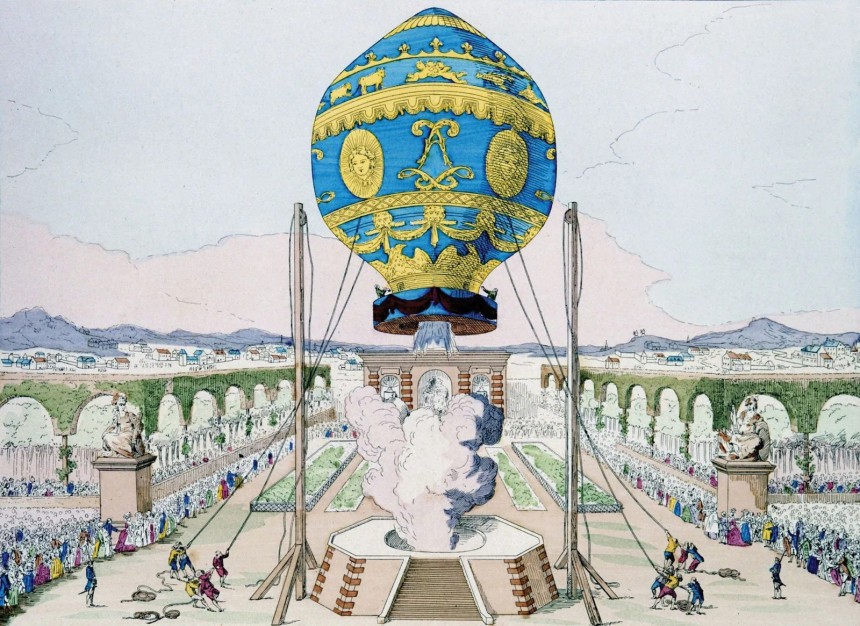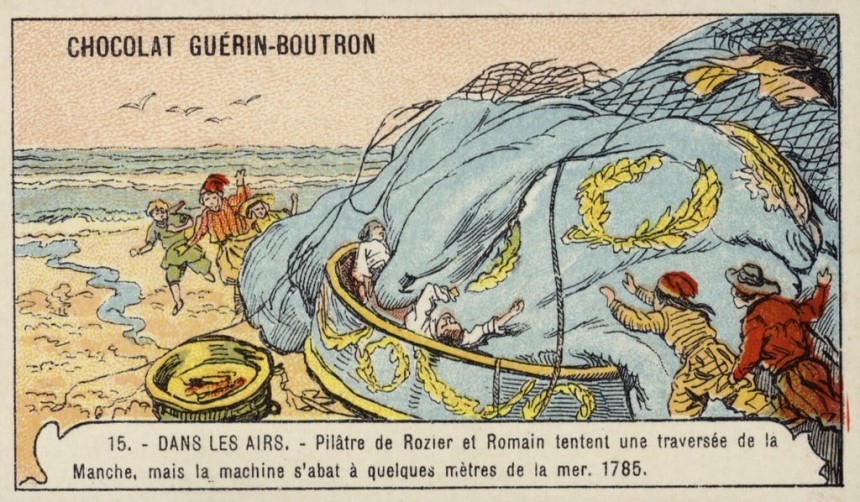What do Richard Branson, Jeff Bezos, Elon Musk, Neil Armstrong, Chuck Yeager, Allan Shepard, Yuri Gagarin, Felix Baumgartner, the Wright brothers, the last king of France, and Benjamin Franklin have in common with a French pharmacist? Flight is the correct answer, and all of the above are pioneers of the many aspects of this type of travel. Today is the 140th anniversary of the first crewed flight in humankind's history.
Since the first ancestor of man, the Homo Erectus began its upward-walking evolutionary journey, our species has constantly been on a quest to find new boundaries – and go beyond them, if not break them altogether. Fast-forward a few geological eons, and the Homo Sapiens – now gifted with intellect – started wondering about conquering the elements. Water was the first to admit defeat, but the air didn’t give in as quickly. It took some millennia of evolution to prepare the final assault of this most volatile medium.
November 21, 1783, is the momentous date when Man took to the air for the first time – and safely returned to solid ground. Two Frenchmen are the heroes of this fascinating exploration that began precisely at 11:00 AM (Paris time) – other sources indicate the lift-off at 2:00 PM. The hour might be subject to debate, but the date is set in stone, together with the names of Jean-François Pilâtre de Rozier and François Laurent le Vieux, Marquis d’Arlandes.
They are the first human beings to break the chains of gravity – with the help of a hot-air balloon and the approval of the king of France, Louis XVI – aptly nicknamed Louis the Last because he would be the last monarch to live in the palace of Versailles, the traditional residence of the French royal family. The king deserves an honorable mention in the history of aviation for allowing a scientist and a nobleman to be the first to fly freely, without any ties to the ground. Initially, being concerned about the safety of the inaugural flight, Louis XVI wanted to force two condemned criminals to get in the balloon and make the trip.
However, de Rozier persuaded the crowned head that it would be highly inappropriate for two low-life inmates to go down in history as the first men to conquer the final frontier: the sky. The king duly changed his decision, so we have two respectable names written in the history books. The two brave souls, de Rozier, and d’Arlandes, boarded the contraption, ascended to a height of approximately 3,000 feet (some 920 meters), floated for about twenty-five minutes, covering a horizontal distance of five-and-a-half miles (some nine kilometers), then safely landed in a field.
The aerostatic globe, as it was first called – see the gallery for a depiction from the period reproducing the specifications of the balloon – was made of silk and paper. The design, made by the Montgolfier brothers, was first tested in a series of tethered flights before being accepted for the historic take-off.
Among the crowd of spectators who had gathered to witness the making of history, one American diplomat put his signature on the Constitution of a very young nation, the United States of America, in 1787. Four years before that, Ben Franklin was watching the first step humanity took straight up in the air. The future Founding Father wrote, ‘We observed it lift off most majestically. When it reached around 250 feet in altitude, the intrepid voyagers lowered their hats to salute the spectators. We could not help feeling a certain mixture of awe and admiration.’
The aerostatic globe consisted of a circular platform on which the two occupants – aerial navigators were the preferred term back then – stood during their adventure. Above the wooden base, the balloon floated freely, secured with ropes. The operating principle was identical to today’s hot air balloons, but the technology differed.
The two aeronauts lit a fire inside a hearth at the center of the platform, and the heat and smoke caused the balloon to lift. As a curiosity, the first combustible used in air travel was a combination of straw and wood. Legend has it that, to set the kindling ablaze, the pilots used a sprinkle of cognac – apparently, the French pioneers had brought some beverages aboard to hold a toast to celebrate their feat.
The first flight almost immediately made several shortcomings of the hot-air balloon apparent, chief of which was the high fuel consumption and complete lack of directional control. But critically, it taught the braving duo a vital lesson in safety: the fire – continuously fed to keep the aircraft airborne – had the most unpleasant tendency to consume the wooden platform on which the entirety of human aviators sat on that November day in 1783.
Luckily, the two men quickly realized the peril and stopped putting wood and straw over the flames, thus allowing the balloon to gradually cool down and slowly descend into a vineyard (out of all the places). To calm the spirits of the peasants who firmly believed demons were haunting them from above, de Rozier and d’Arlandes offered them complimentary bottles of champagne (or so the story goes). As a quick side note, I must admit that, in the heat of the moment, the bewildered farmers didn’t ask themselves why the armies of Hell would choose the heavens as their invasion-launching base.
There’s a strong belief that every step humanity has taken on the ladder of progress has been paid in blood – and air travel is no exception. On June 15, 1785, barely a year and a half after the first free flight (merely a rudimentarily controlled floating, to be honest), the first air crash claimed the lives of two endeavoring aviators.
Again, the French take the honor of being the first to shed blood in the struggle for aerial supremacy. The incident occurred while a hybrid balloon – filled with hydrogen and hot air – collapsed from a height during an attempt to cross the English Channel from France to England. One of the two was the same Jean-François Pilâtre de Rozier, who had paved the way for air travel. The other tragic hero was a courageous man by the name of Pierre Romain.
The first voluntary free flight in human history was achieved with a highly decorated balloon with golden flourishes, zodiac signs, suns, and the royal cipher of King Louis XVI. The aircraft had an approximate volume of 60,000 cubic feet (1,700 cubic meters) and measured 75 feet in height (just under 23 meters), with a diameter of 50 feet (15 meters). The platform was about three feet wide, and the entire airship weighed around 3,400 lbs (some 1.6 tons) – according to the illustration made in 1786 that allegedly describes the ‘exact figure and proportions’ of the aerostatic globe.
Jean-François Pilâtre de Rozier entered history not once but twice – first, by being one of the first two men to fly untethered in a hot air balloon, then by becoming the first fatality of air travel. His companion on that fatidic flight was still alive when rescuers rushed to the crash site but succumbed shortly after.
The hybrid hydrogen-hot-air balloon in which the French pharmacist-turned-aviator made his last flight was christened Tour de Calais and was brilliantly decorated with artwork and metallic gilding. It consisted of two chambers, one for the highly flammable hydrogen and a second one, directly under the first, filled with hot air (with a stove at the bottom to provide the necessary heat).
A modern forensic hypothesis suggests that the metallic coating caused a static discharge that sparked the varnished envelope and lit the hydrogen. Another theory is that hot ashes from the stove rose and set the hydrogen-containing compartment on fire. Whichever the case, the outcome was disastrous, and it wrote the first dark chapter in the history of human flight.
November 21, 1783, is the momentous date when Man took to the air for the first time – and safely returned to solid ground. Two Frenchmen are the heroes of this fascinating exploration that began precisely at 11:00 AM (Paris time) – other sources indicate the lift-off at 2:00 PM. The hour might be subject to debate, but the date is set in stone, together with the names of Jean-François Pilâtre de Rozier and François Laurent le Vieux, Marquis d’Arlandes.
They are the first human beings to break the chains of gravity – with the help of a hot-air balloon and the approval of the king of France, Louis XVI – aptly nicknamed Louis the Last because he would be the last monarch to live in the palace of Versailles, the traditional residence of the French royal family. The king deserves an honorable mention in the history of aviation for allowing a scientist and a nobleman to be the first to fly freely, without any ties to the ground. Initially, being concerned about the safety of the inaugural flight, Louis XVI wanted to force two condemned criminals to get in the balloon and make the trip.
The aerostatic globe, as it was first called – see the gallery for a depiction from the period reproducing the specifications of the balloon – was made of silk and paper. The design, made by the Montgolfier brothers, was first tested in a series of tethered flights before being accepted for the historic take-off.
Among the crowd of spectators who had gathered to witness the making of history, one American diplomat put his signature on the Constitution of a very young nation, the United States of America, in 1787. Four years before that, Ben Franklin was watching the first step humanity took straight up in the air. The future Founding Father wrote, ‘We observed it lift off most majestically. When it reached around 250 feet in altitude, the intrepid voyagers lowered their hats to salute the spectators. We could not help feeling a certain mixture of awe and admiration.’
The aerostatic globe consisted of a circular platform on which the two occupants – aerial navigators were the preferred term back then – stood during their adventure. Above the wooden base, the balloon floated freely, secured with ropes. The operating principle was identical to today’s hot air balloons, but the technology differed.
The two aeronauts lit a fire inside a hearth at the center of the platform, and the heat and smoke caused the balloon to lift. As a curiosity, the first combustible used in air travel was a combination of straw and wood. Legend has it that, to set the kindling ablaze, the pilots used a sprinkle of cognac – apparently, the French pioneers had brought some beverages aboard to hold a toast to celebrate their feat.
The first flight almost immediately made several shortcomings of the hot-air balloon apparent, chief of which was the high fuel consumption and complete lack of directional control. But critically, it taught the braving duo a vital lesson in safety: the fire – continuously fed to keep the aircraft airborne – had the most unpleasant tendency to consume the wooden platform on which the entirety of human aviators sat on that November day in 1783.
There’s a strong belief that every step humanity has taken on the ladder of progress has been paid in blood – and air travel is no exception. On June 15, 1785, barely a year and a half after the first free flight (merely a rudimentarily controlled floating, to be honest), the first air crash claimed the lives of two endeavoring aviators.
Again, the French take the honor of being the first to shed blood in the struggle for aerial supremacy. The incident occurred while a hybrid balloon – filled with hydrogen and hot air – collapsed from a height during an attempt to cross the English Channel from France to England. One of the two was the same Jean-François Pilâtre de Rozier, who had paved the way for air travel. The other tragic hero was a courageous man by the name of Pierre Romain.
Jean-François Pilâtre de Rozier entered history not once but twice – first, by being one of the first two men to fly untethered in a hot air balloon, then by becoming the first fatality of air travel. His companion on that fatidic flight was still alive when rescuers rushed to the crash site but succumbed shortly after.
The hybrid hydrogen-hot-air balloon in which the French pharmacist-turned-aviator made his last flight was christened Tour de Calais and was brilliantly decorated with artwork and metallic gilding. It consisted of two chambers, one for the highly flammable hydrogen and a second one, directly under the first, filled with hot air (with a stove at the bottom to provide the necessary heat).
A modern forensic hypothesis suggests that the metallic coating caused a static discharge that sparked the varnished envelope and lit the hydrogen. Another theory is that hot ashes from the stove rose and set the hydrogen-containing compartment on fire. Whichever the case, the outcome was disastrous, and it wrote the first dark chapter in the history of human flight.
